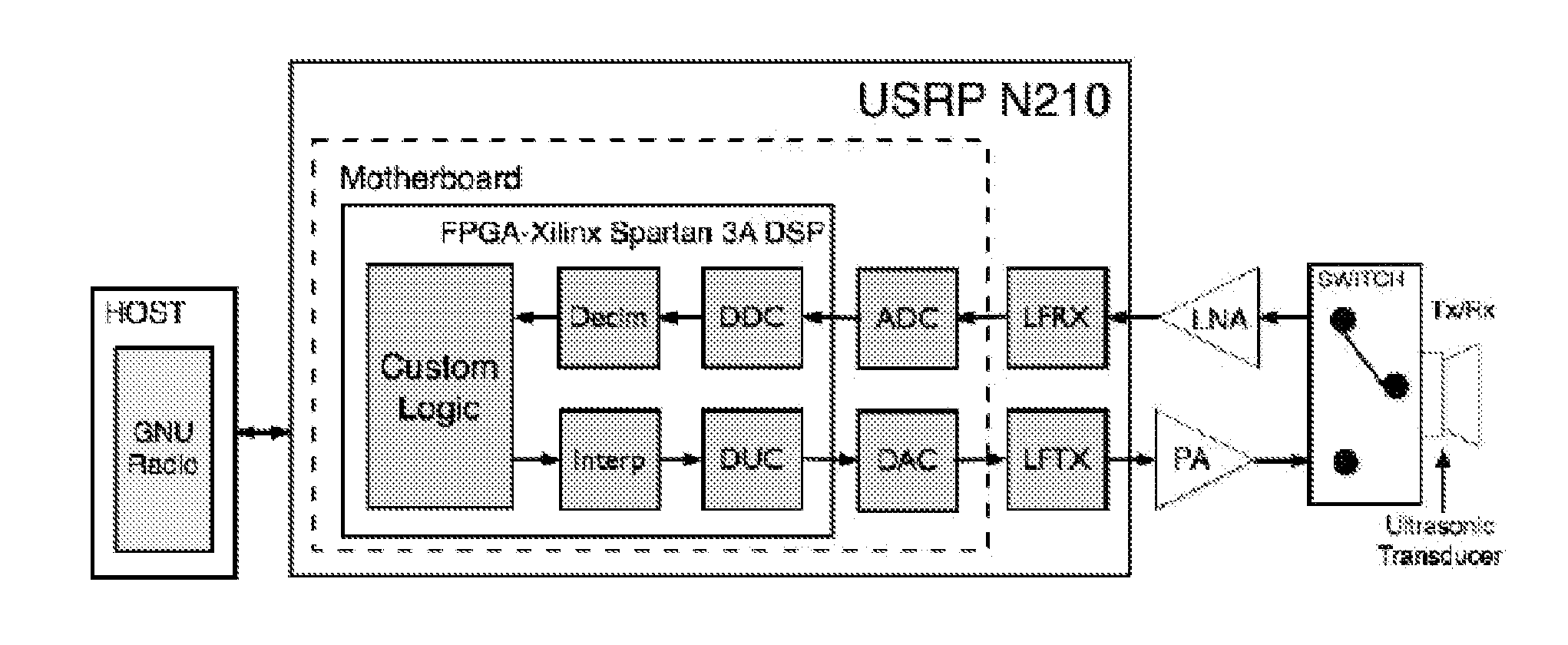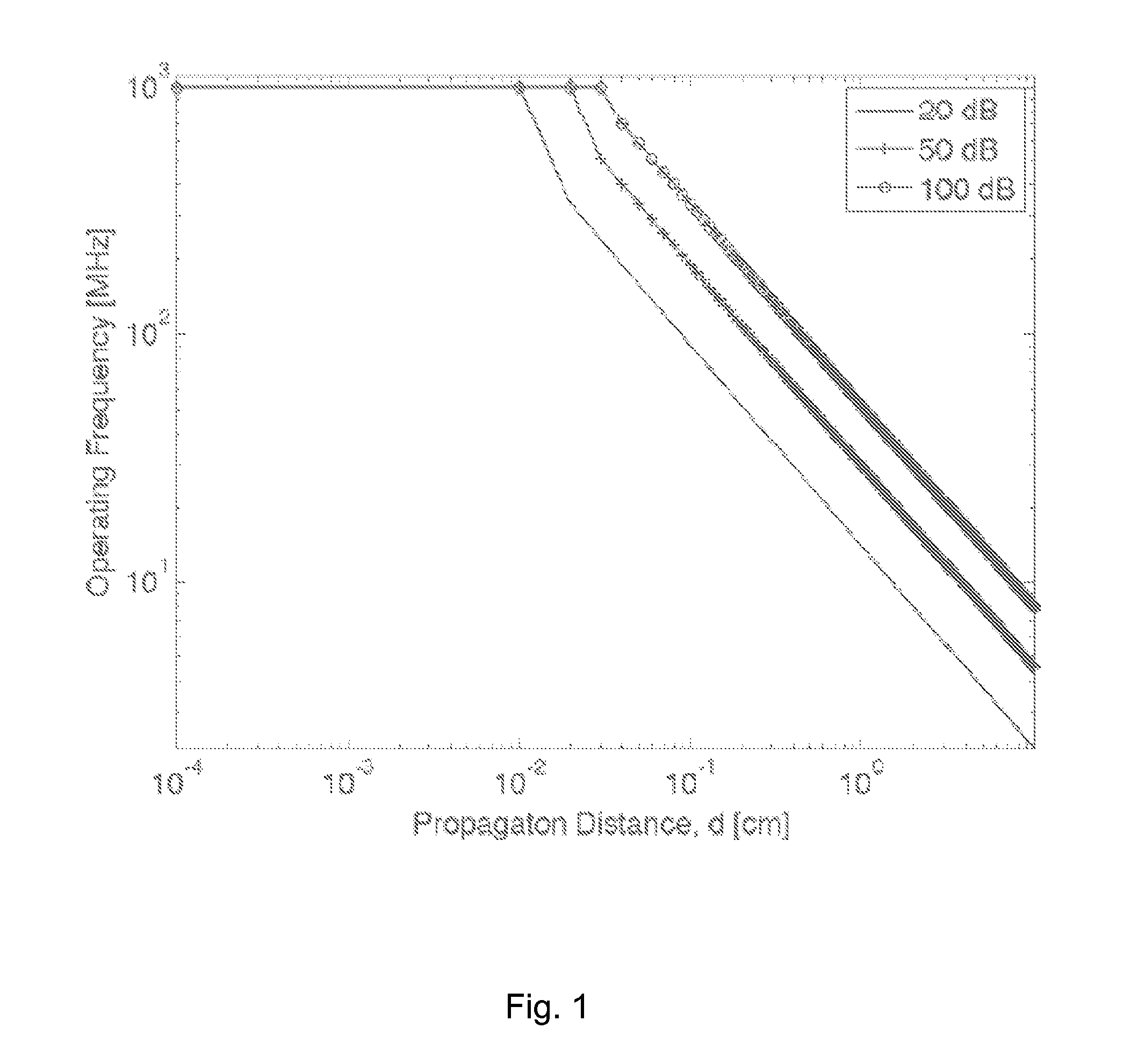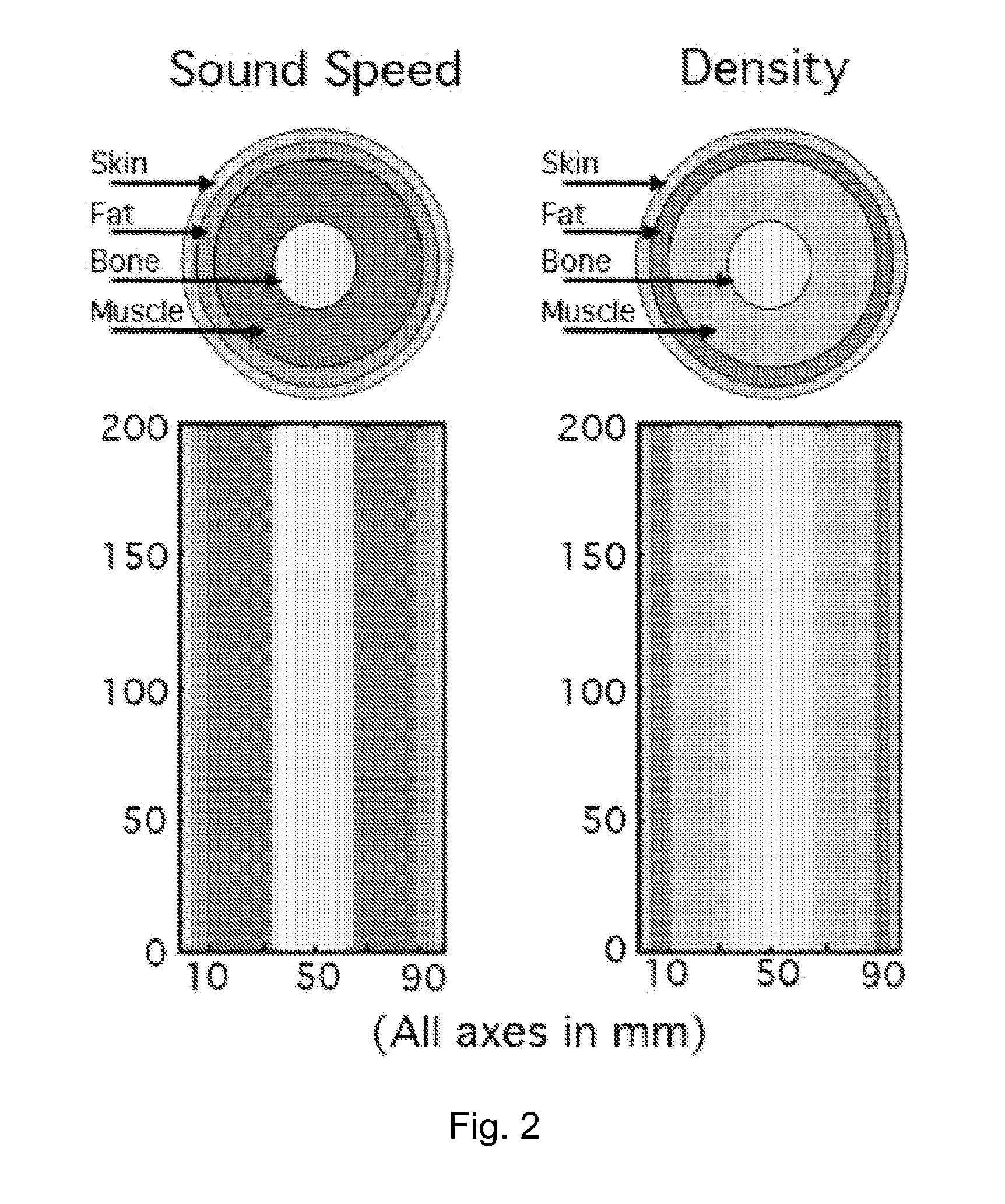Transmission and medium access control techniques for ultrasonic communications in the body
a technology of ultrasonic communication and access control, applied in the field of transmission and medium access control techniques for ultrasonic communications, can solve the problems of overcoming the limitations of currently available catheter technology, underlying challenge of enabling networked intra-body miniaturized (at the micro or nano scale) sensors and actuators that communicate through body tissues, and networked implantable devices. , to achieve the effect of introducing waveform diversity and reducing thermal and mechanical effects, the duty cycle is shor
- Summary
- Abstract
- Description
- Claims
- Application Information
AI Technical Summary
Benefits of technology
Problems solved by technology
Method used
Image
Examples
Embodiment Construction
Ultrasonic Propagation in Human Tissues
[0083]Ultrasonic waves originate from the propagation of mechanical vibrations of particles in an elastic medium at frequencies above the upper limit for human hearing, i.e., 20 kHz. Even if each particle oscillates around its rest position, the vibration energy propagates as a wave traveling from particle to particle through the material. Acoustic propagation through a medium is governed by the acoustic wave equation (referred to as the Helmhotz equation), which describes pressure variation over the three dimensions,
∇2P-1c2∂2p∂t2=0,(1)
[0084]where P(x, y, z, t) represents the acoustic pressure scalar field in space and time, and c is the propagation speed in the medium with a typical value of 1500 m / s in blood (i.e., five orders of magnitude slower than RF propagation in air).
[0085]When ultrasonic waves propagate through an absorbing medium, the initial pressure, P0 reduces to P(d) at a distance d as
P(d)=P0e−αd (2)
where α([Np·cm−1]) is the amp...
PUM
 Login to View More
Login to View More Abstract
Description
Claims
Application Information
 Login to View More
Login to View More - R&D
- Intellectual Property
- Life Sciences
- Materials
- Tech Scout
- Unparalleled Data Quality
- Higher Quality Content
- 60% Fewer Hallucinations
Browse by: Latest US Patents, China's latest patents, Technical Efficacy Thesaurus, Application Domain, Technology Topic, Popular Technical Reports.
© 2025 PatSnap. All rights reserved.Legal|Privacy policy|Modern Slavery Act Transparency Statement|Sitemap|About US| Contact US: help@patsnap.com



